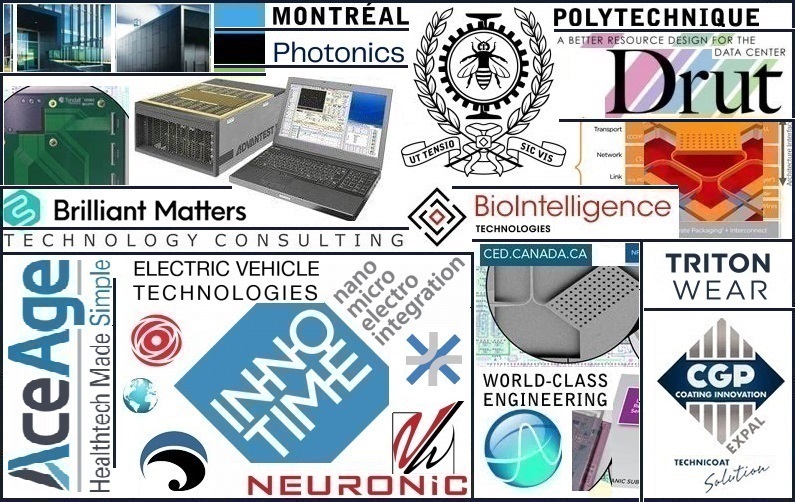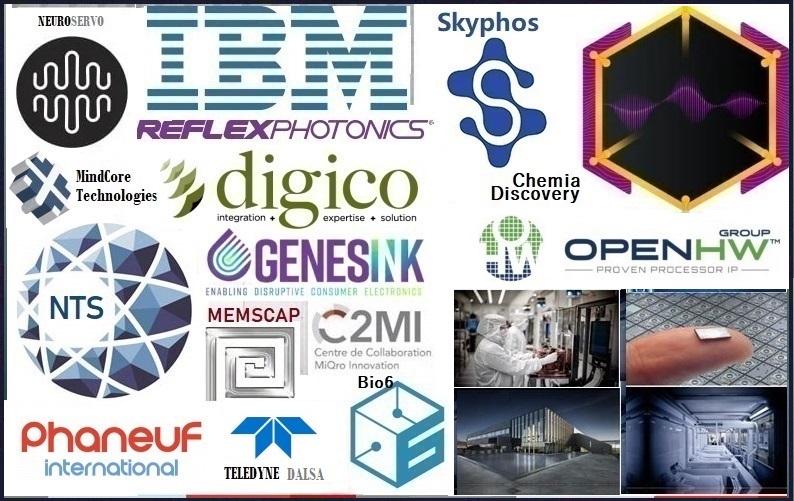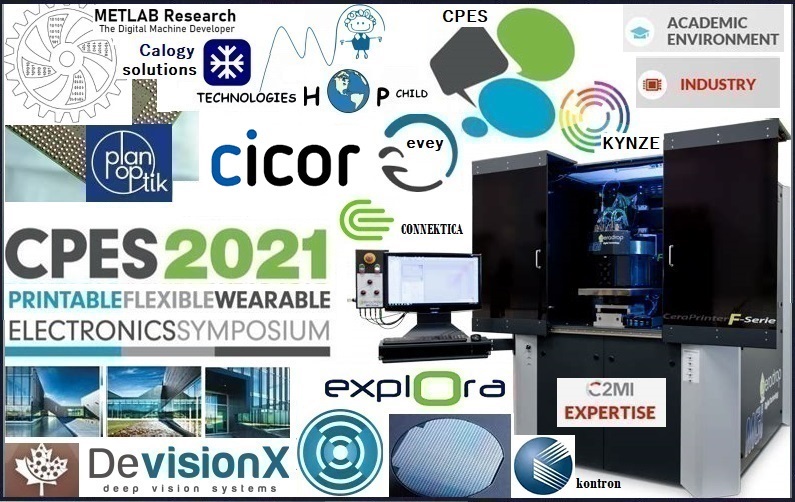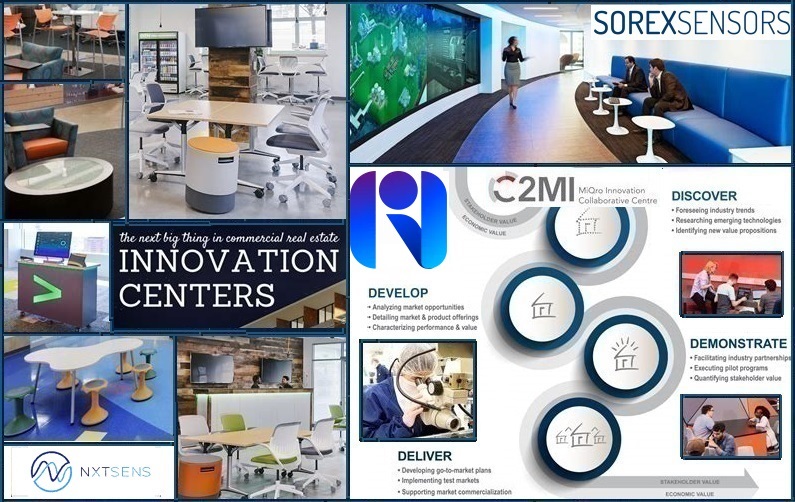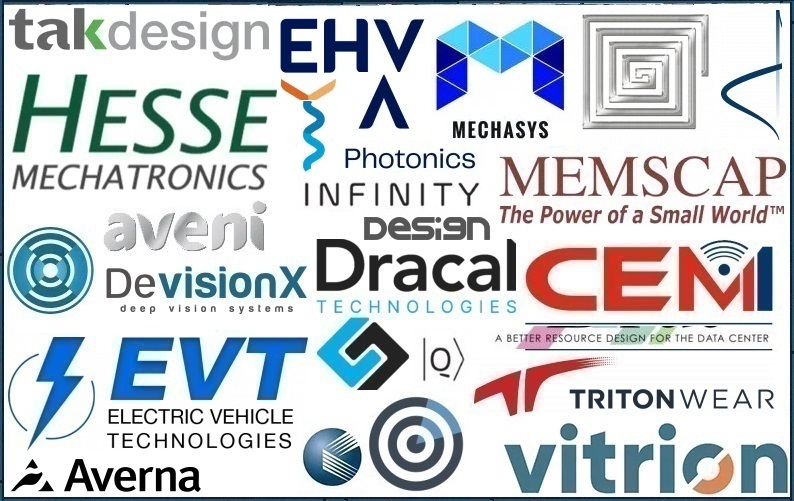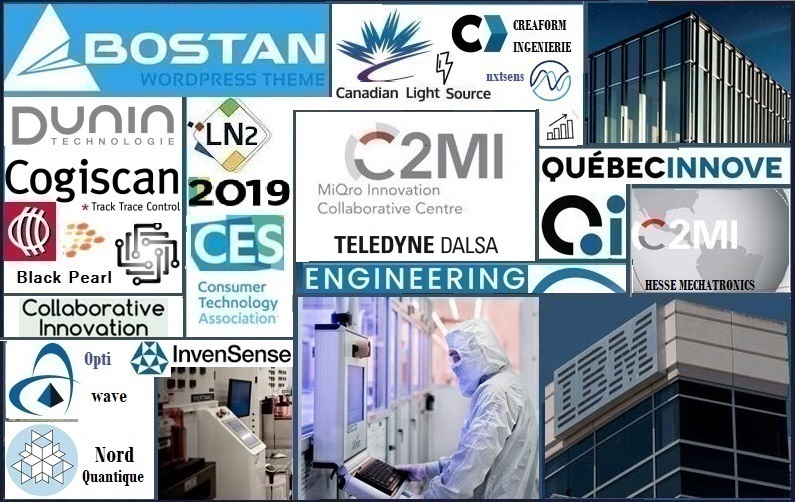
The MiQro-Innovation Collaborative Centre also known as the Collaborative Centre for Microelectronics Innovation or C2MI is designated as a Centre of Excellence for Commercialisation and Research (CECR) by the Canadian Network of Centres of Excellence (NCE). The CECR program has captivated top commercialisation talent and internationally recognised corporate professionals to Canada. To guarantee complete return on research and development, the CECR program includes expenses that do not qualify under other federal research finance programs.
Networks of Centres of Excellence are partnerships between government, industries, universities, and non-governmental organisations with the goal of developing Canadian research and entrepreneurial talent into economic and social advantage of all Canadians. C2MI is in the Science Park of Bromont in the province of Quebec and was initially established from a partnership between IBM Canada, Teledyne DALSA Semiconductor, and the Université de Sherbrooke. Teledyne DALSA Semiconductor (a business unit of Teledyne Digital Imaging) is in Bromont’s technology industrial park. Teledyne DALSA is one of the world’s leading companies in revolutionary MEMS, CCD sensors (used in digital imaging), high voltage CMOS, and presents an extensive range of wafer fabrications. CMOS technology fabricates NMOS and PMOS transistors with N- and P-channel metal-oxide-semiconductor field-effect transistors (MOSFETs) on one chip. A MOSFET is a field-effect transistor (FET) that is fabricated by controlled silicon oxidation of which the voltage is defined by the device’s conductivity. It offers greater benefits than separate NMOS and PMOS transistors and is the primary technology used in digital integrated circuits.
To support and develop companies in advanced aerospace, manufacturing, and microelectronics, the Bromont Science Park was established to group companies together that fall into a specific category; companies that are committed to research and innovation and work in high-technology sectors. C2MI is the largest electronic systems research and development centre in Canada and a vital chain in the microelectronic ecosystem. It accommodates more than two hundred and fifty researchers and is one of the most important research centres of its kind in the world. Its ecosystem plays a significant role in innovation by presenting an infrastructure of almost four hundred organisations in various industrial areas. The company is a top innovation centre for the development of essential knowledge in all economic areas of digital technologies. These include intellectual property protection, product certification, resources for market analysis, skills development, strategic business planning, funding for commercialisation, and financial guidance and services to help companies thrive in the economy. C2MI’s policy is to create innovative partnerships with centres and universities to develop a research and development collaboration ecosystem-network between academia and industry. Their mission is mainly to be an international innovator in the development of computer chips, the manufacturing and commercialisation of Micro Electro-Mechanical Systems (MEMS), the integration of optoelectronic components, and screen-printing electronic circuits to fast-track the development of new procedures and products. Their customer base extends beyond Canada’s borders. They serve as an international centre for collaboration and innovation between the research phase and the launching of microelectronic products enabling them to bring tomorrow’s prototypes to today’s market. The Science Park also includes C2MI’s automation, instrumentation, and robotics research centre. The Aerospace section of Bromont Science Park surrounds GE Aviation, a developer in the production of components, integrated systems, turbo engines, and turboprops for civilian and military aircraft. Investment in new technology allows Bromont GE Aviation (one of the most industrious global locations) to assemble new aircraft engine components such as compressor blades, fan blades, low-pressure turbine blades, and metal leading edges for the next generation of aircraft engines. It develops complex robotic systems, software applications and intellectual property that are exported to global GE Aviation facilities.
The Université de Sherbrooke is a French-speaking establishment offering an academic education that is globally recognised. IBM Technology collaborates with clients in Quebec and Canada, relying on an ecosystem of business partners and service associations to supply the assets and skills to help clients establish a valuable organisation. In January 2020, the Université de Sherbrooke and IBM Bromont renewed their partnership with the NSERC-IBM Canada Industrial Research Chair in High Performance Heterogeneous Integration and launched a complementary collaborative research and development project in support of the Chair. The first project was to develop innovative processes and to progress the demands of digital technologies and artificial intelligence. The two projects are funded by an investment of more than six million Canadian dollars from the Université de Sherbrooke, IBM, NSERC, and Prompt. In October 2020, the Université de Sherbrooke named the NSERC-Teledyne DALSA Industrial Research Chair for MEMS and next generation micro-photonics. This Chair intends to develop and improve materials, production processes and applications for future microsystems and micro-photonics.
Entrepreneurs and researchers are the future of technological innovation in Quebec. Innovation is the practical application of concepts that effect the introduction of new products and services as well as the improvement of existing products and services. The terms research and development are different types of innovation-associated concepts. To surpass expectations, training, product, and service innovations must be driven into every corner of the economy. Billions in funding has been filtered into business investment, supply chains, and technology to benefit Canadian workers. The Natural Sciences and Engineering Research Council (NSERC) is Canada’s largest supporter of discovery and innovation as well as the primary federal research funding agency for engineering and natural sciences. Funds are available to businesses, colleges, universities, and non-profits as well as explorers and innovators in search of scientific and technical breakthroughs. NSERC supports Canada’s research community by providing Canadian engineers and scientists opportunities to gain new skills. Young talent is encouraged, and training prospects are created for the next generation of scientists and engineers. PROMPT supports innovative projects of companies and researchers by funding technological innovations in artificial intelligence, cybersecurity, quantum computing, and other information technologies as well as research and development, the creation of partnerships, and the certification of technologies. The mission is to create tomorrow’s Quebec.
In partnership with the Government of Quebec, IBM Research launched its fourth Discovery Accelerator, the first in Canada, to establish Quebec as a primary technological centre for the development of computational technologies such as artificial intelligence, high-performance computing, semiconductors, and quantum computing. The quantum computer was installed in the province of Quebec as well as a HPC cluster for artificial intelligence to speed up research. HPC technology uses clusters of powerful processors to resolve big data (multi-dimensional datasets) and compound problems at exceptional speeds. HPC systems function at speeds more than one million times quicker than the fastest laptop, desktop, or server system. The purpose of the Discovery Accelerator is to focus on the development of new projects, collaborations, training programs and expertise in vital research areas such as the world’s most compound problems in life sciences, sustainability, and energy. IBM Research collaborates with the Microelectronics Innovation Zone in Bromont and the Government of Quebec’s Quantum Innovation Zone in Sherbrooke to promote advanced technology throughout the province, making it available for scientific research and partners in private sectors. An IBM Quantum System One is installed at IBM Bromont for partners and the Government of Quebec’s Innovation Zone. The Discovery Accelerator explores compound problems which involves the modelling of new materials and solving larger sustainability challenges. High-performance computing (HPC) combines classical and quantum technology to examine scientific challenges. With IBM’s state-of-the-art quantum computer, Quebec is using the hybrid cloud to integrate quantum computing, AI, and high-performance computing; thereby accelerating scientific discovery. The amalgamation of these technologies promotes the future of quantum computing and increases a breakthrough for quantum science.
MEMS is the technology of microscopic devices, combining both electronic and moving parts, and are made of components which are micrometres in size. MEMS devices range from twenty micrometres to a millimetre, although components organised in displays such as digital micromirror devices can exceed one thousand square millimetres. They consist of a central unit that processes data (an integrated circuit chip such as a microprocessor) and several components that interact with the surroundings (such as microsensors). Due to the large surface area to volume ratio of MEMS, forces created by ambient electromagnetism (electrostatic charges and magnetic moments), and fluid dynamics (surface tension and viscosity) are more significant design considerations than with bigger scale mechanical devices. MEMS technology is separated from molecular nanotechnology or molecular electronics in that the molecular technologies must also consider surface chemistry. MEMS was practical once it could be fabricated with modified semiconductor device fabrication technologies (used for electronics). The 2010 Wharton-GSA semiconductor ecosystem survey on collaborative innovation in the global semiconductor industry confirmed that the ecosystem offers ample opportunities for semiconductor companies; to benefit from their own products and technologies is influenced by the relationships with complementors in their business ecosystem. Complementors are customers, suppliers, and providers of complementary products. They are companies that provide complementary products in combination with another product, for example Intel and Microsoft are complementors in the PC market.
There are two types of semiconductors. The N-type is used when there are many free electrons and the P-type is used in a situation of less free electrons. Devices and components built with semiconductors include computer memory, diodes, integrated circuits, and transistors. The fabrication of MEMS developed from the process technology in semiconductor device fabrication, for example the basic techniques are deposition of material layers, patterning by photolithography and etching to produce the required shapes. One of the building blocks in MEMS processing is the ability to deposit thin films of material with a thickness from one micrometre to around one hundred micrometres. The Nano Electro-Mechanical System process is similar, but the area of film deposition varies from a few nanometres to one micrometre. There are two types of deposition processes – chemical vapour deposition and physical vapour deposition. Patterning in MEMS is the transfer of a pattern into a material. Lithography in MEMS is the transfer of a pattern into a photosensitive material by means of exposure to a radiation source such as light – electron beam lithography, focused-ion beam lithography, focused ion beam milling (diamond patterning), photolithography, radiation, and X-ray lithography. Wet chemical etching is the selective removal of material by dipping a substrate into a solution that dissolves it. In wet and dry etching, the material is dissolved when dipped into a chemical solution. In dry etching, the material is dissolved by using reactive ions. Bulk micromachining is the oldest model of silicon-based MEMS. Surface micromachining makes use of layers on the surface of a substrate (as the structural materials) rather than using the substrate. Wafer bonding joins two or more substrates (with the same diameter) to one another to form a structure.
Examples of MEMS applications are: 1. Optical switching technology for switching technology and alignment for data communications. 2. Displays such as the digital micromirror device chip in a projector (based on digital light processing technology) which has a surface with several hundred thousand micromirrors or single micro-scanning-mirrors known as micro scanners. 3. Inertial measurement units such as the MEMS inertial navigation systems of airplanes, modern cars, submarines, and other vehicles to detect pitch, roll, and yaw for example the autopilot of an airplane. 4. Bio-MEMS applications in medical and health related technologies which includes lab-on-a-chip (makes use of microfluidics and micropumps), biosensors, chemo sensors, and embedded components of medical devices such as stents. 5. MEMS microphones in portable devices such as headsets, laptops, and mobile phones. The market for smart microphones contains wearable devices, smartphones, smart home, and automotive applications. 6. Accelerometers in consumer electronic devices like augmented reality devices, various digital cameras, game controllers (Nintendo Wii), personal media players and cell phones (smartphones and many HTC PDA models), and virtual reality devices. It is also used in PCs to protect hard disk drives and avoid data loss and damage. 7. MEMS-based scanning probe microscopes such as atomic force microscopes.
Microelectronics is at the heart of all technology and innovation; research and development are the cornerstones of success in the microelectronics industry. Large firms specialise in the production of high-volume reasonably priced components for end products like automobiles, biomedical equipment, and electronics. Small companies offer innovative solutions and absorb the costs of high-sales-margin custom fabrication. Both large and small companies participate in research and development to discover new MEMS technologies. Small and medium-sized enterprises (SMEs) are the pillars of Québec’s accomplishments. Startups have exclusive corporate cultures as well as high development possibilities which purely focuses on creativity, dynamic business models, flexibility, the development of disruptive technology, and global conditions. RSRI (regroupement sectorial de recherche industriel) supports innovation and progress in Québec through funding which inspires Québec’s businesses to be competitive and to benefit from research skills. RSRI creates and finances projects that motivates companies, public research centres, technology transfer centres, and universities to produce new products, solutions, and revolutionary services. While training the labour market (strengthening local expertise and creating long-term wealth), the company also encourages researchers and entrepreneurs to complete research projects.
Developments in the perception of quantum phenomena and how to manipulate and control quantum states have unleashed new applications based on quantum superposition and entanglement. Quantum research and the first quantum technology revolution (which involved the development of lasers to explore the quantum properties of matter) has started a new quantum era. ‘Curiosity’ of disruptive quantum phenomena has created a research ecosystem in cryptography, high-performance computing, nanomaterials, and quantum photonics. Several innovation centres in Québec are collaborating with industry, research institutes, universities, and startups to gather expertise and ‘nurture’ the quantum sector. The centres are focal points for expertise, ‘know-hows’, and progressive manufacturing infrastructures to intercede for quantum technology improvement. Collaborative research and innovation in quantum technologies sustain business growth, entrepreneurship, export, innovation, investment, and science. The second quantum revolution has had a productive, real-world impact and quantum discoveries such as quantum sensors and quantum metrology.
Quantum technologies yield inclusive advantages and are a source of innovation that focus on global challenges. Future disruptive improvements in sectors such as cryptography and quantum computing will strengthen C2MI Québec’s manufacturing and commercialisation of Micro Electro-Mechanical Systems and increase the impact on science, technology, and innovation in Canada. Entrepreneurship is vital in structuring an industry around digital and quantum technology.



